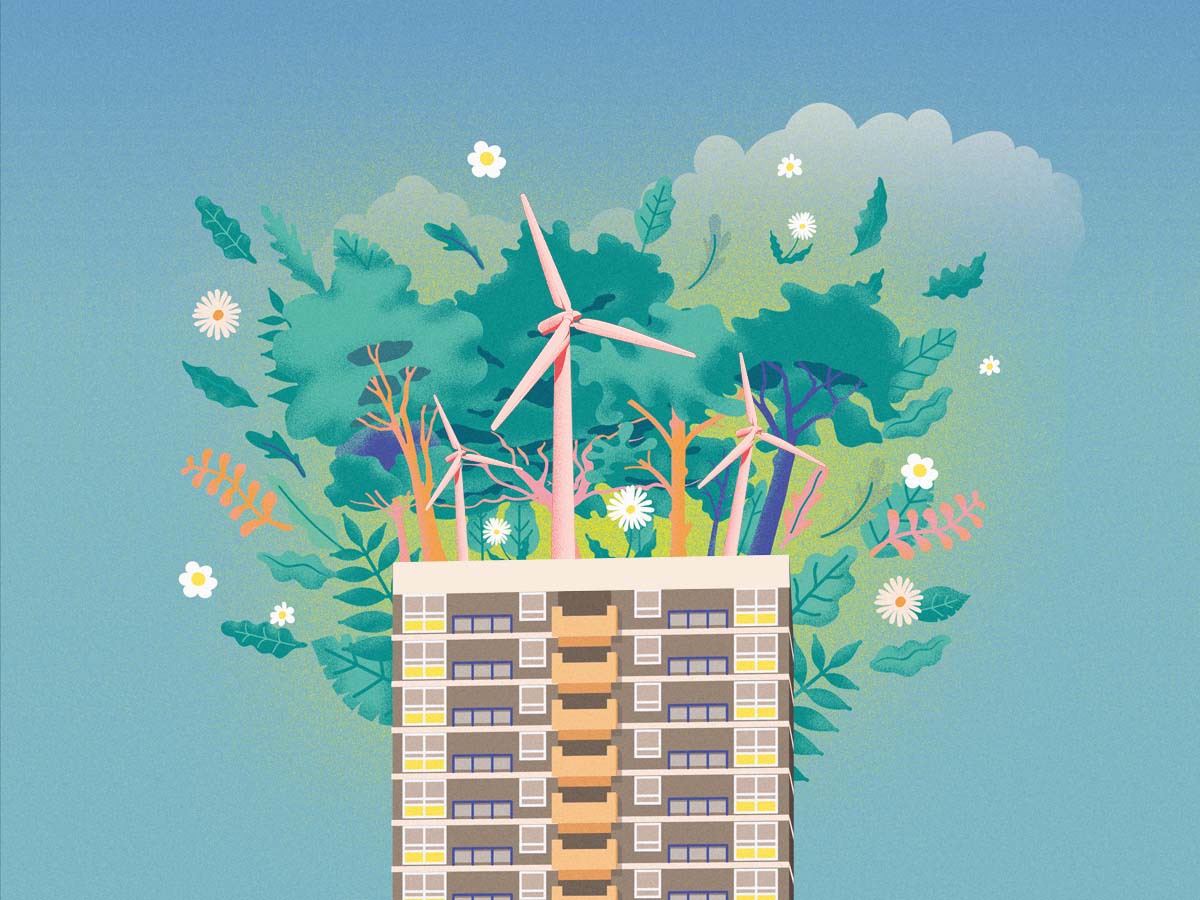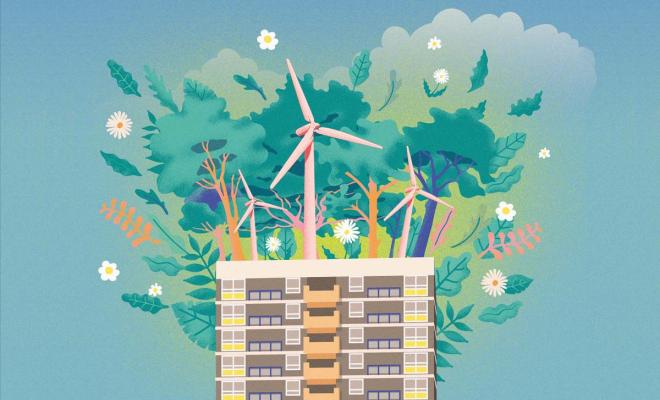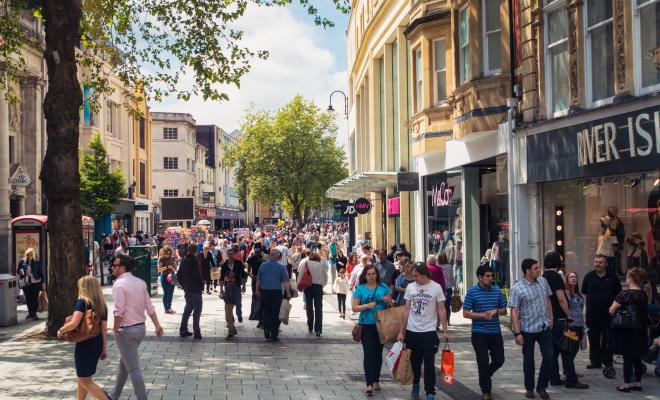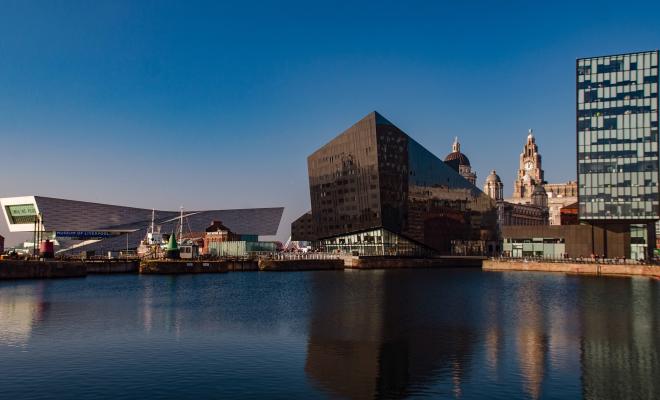21 Jul 2023
How is Action 32 tackling the climate crisis?
Local installations of renewable energy will form a vital part of the rapid transition to renewable energy generation that is needed to meet the UK’s emissions targets.
Barnsley is home to the UK’s largest community energy project. This has delivered solar energy to hundreds of vulnerable households across the town as well as reduced energy bills. Before the project, 9,000 households in the council area suffered from fuel poverty, meaning they couldn’t afford to keep their homes warm enough within their incomes. Now hundreds of homes have been equipped with solar panels, batteries, and smart monitors, which allow owners to store electricity and monitor and manage their energy use.
The Barnsley model builds the resilience of communities to events such as fuel bill rises – it's centred on the principle of community self-generation, self-storage and self-consumption.
The project is the outcome of a partnership between Barnsley Council and Energise Barnsley, a social enterprise set up by and with the council.
Timeline of the project:
- 2014: Initial meetings about the project took place
- 2015: First installations happened
- 2018: Energise Barnsley won Power to Change’s Collaboration Award for its team-working between community, commercial, public and third sector partners, Barnsley Council included
- July 2021: The council approved another solar project in conjunction with Energise Barnsley, to benefit a further 1,000 tenants
The project has kept expanding, with more Barnsley households benefitting from solar every year.
What impact has the project had?
Energise Barnsley has created positive social, economic and environmental outcomes for people and communities. Two groups of local people have benefited from the scheme, tenants who have received solar installations on their homes, and others who have benefited from a community fund created through the Barnsley Solar Bond.
Cutting emissions and fuel bills
- Rooftop solar panels were installed on 321 homes by 2017.
- More than 75% of homes benefiting were social housing bungalows where older people live.
- 40 batteries were installed into council-owned properties managed by social housing provider Berneslai Homes – 70% of these were occupied by retirees.
- Installations also took place on 16 non-domestic properties such as schools and community buildings.
- A further 49 residential batteries were installed in 2019.
By spring 2021, the original 321 home installations had produced 5,513MWhs of energy, saving a collective £278,844 for tenants on electricity bills and 2,922 tonnes in reduced CO2 emissions. Over the project's lifetime, a massive 18,000 tonnes of emissions savings are predicted.
Supporting community projects
The Barnsley Solar Bond community fund has helped run healthy cooking courses for those on a low income, paid the salary of a community farm manager, supported the local Age UK centre, covered replacement playground equipment, and contributed towards neighbourhood revitalisation efforts such as flowerbed planting.
In 2021, Energise Barnsley awarded a £20,000 contract to the Community First Credit Union, which will work to provide debt support, loan services and budgeting advice in order to help local people manage their critical rent, council tax and utility bills. Overall, an estimated £400,000 of surplus income generated via the solar Feed-in Tariff will be put back into communities over the project’s lifetime.
Supporting local jobs
As Energise Barnsley has expanded its projects and aspirations for local people over the years, employment opportunities have also opened up. The new project announced in July 2021 will train local contractors to install solar PV systems and create six new long-term jobs.
What made this work?
A clear vision and aims
Barnsley was built on coal, but renewables offer new promise for Barnsley to become a leader in the low-carbon energy sector giving the council a positive vision to get behind. This work aligned with Barnsley Council’s 2015-2025 Energy Strategy, which had six core aims:
- Generate income and save money.
- Grow the number of local businesses in the low-carbon sector.
- Grow green jobs, skills and businesses.
- Increase the proportion of energy consumed from local low-carbon sources.
- Cut CO2 emissions.
- Cut fuel poverty.
Partnership working
Collaborating with Energise Barnsley has ensured that the council was able to fulfil all six of its objectives. The council and Energise Barnsley joined with British Gas Solar, Northern Powergrid, Moixa (battery installers), Berneslai Homes (the council’s social housing company) and Generation Community Ventures (community developer and asset manager). The council was able to gain support from parts of the community it had struggled to reach before and to deliver tangible benefits to vulnerable residents.
What resources were needed?
The total cost of the project was £2 million. This was funded by a £1.2 million loan from ethical lender Charity Bank and an £800,000 retail bond, mentioned above. The Barnsley Solar Bond raised the £800,000 target in under three months in 2016, with a minimum investment of £100. Bond Investors – 60% of which are local – receive interest of 5% per annum. The bond allowed ordinary people to invest in the project, and enjoy returns based on the sale of surplus energy to National Grid.
Energise Barnsley’s main income generator is the Feed-in Tariff, a government mechanism that pays for surplus renewable energy produced at home and exported to the National Grid (tariff payments typically continue for 20 years) which is no longer available. In Barnsley, most of this income was used to make interest payments to Barnsley Solar Bond investors, with the rest retained for the community fund. This fund has financed street cleaning, LED street lighting and many other services and improvements. Feeding money back into communities has hugely increased the number of local people who have been served by what began as a simple solar partnership between the council and Energise Barnsley.
In 2019, the Department for Business, Energy and Industrial Strategy announced Energise Barnsley would be one of 13 groups to receive a share of £8.57 million funding. This award meant Energise Barnsley could fit a further 49 homes with smart batteries for air source heat pumps.
Lessons from Barnsley
Costs of solar are falling
The business case for Barnsley was challenging due to the cost of renewables when the scheme was launched. The cost of solar batteries was £6,250 per unit for example, but costs have since fallen dramatically. The economics for similar projects are vastly improved now as solar technology cheapens and retail tariffs rise.
A related key lesson is that the combination of solar PV panels with batteries provides the best value for residents, as opposed to either panels or batteries alone.
Navigating the new Smart Energy Guarantee scheme
Councils can no longer take advantage of the Feed-in Tariff scheme, which closed to new applications in March 2019. Energise Barnsley built itself around the tariff as the main income generator. This has been replaced by the new Smart Energy Guarantee (SEG), so a route to export energy to the market still exists. Yet Smart Energy Guarantee subsidies can fluctuate and are typically lower than the Feed-in Tariff.
The lack of a stable guaranteed subsidy makes it harder to replicate the scheme. For new projects to be commercially viable, other avenues must be found. Energise Barnsley is exploring options that rely on demand-side response, peer-to-peer trading, and the government’s ongoing Renewable Heat Incentive. Community Energy England, Green Alliance and the new online forum PowerPaired are all also looking into alternative models for local authorities.
Community engagement is vital
Communities must be helped to fully understand projects and the benefits they will deliver. Communication should be consistent and clear, making considerations for tenants and homeowners of all ages and abilities.
Andy Heald, Energise Barnsley Director
Councillor Sir Stephen Houghton, Leader of Barnsley Council.
Useful information
To find out more about Energise Barnsley, email Andy Heald.
Energise Barnsley has already been the subject of detailed case studies. For more detail, see Energy Hub’s previous case study.
Friends of the Earth's view
Barnsley council has demonstrated the benefits of joined-up thinking and partnership working, delivering a resilient local supply of renewable energy at the same time as tackling fuel poverty and creating local jobs.
Although the situation is now more challenging for community renewables there are still plenty of community energy projects focussing either on energy generation or energy efficiency so councils should still look to partner up.
Councils can also encourage more renewables by allocating space in their Local Plans (Action 29 of the 50-point Climate Action Plan for Councils).
Friends of the Earth is showcasing specific examples of good practice in tackling climate change, but that doesn’t mean we endorse everything that a council is doing.
This case study was produced by Ashden and Friends of the Earth. It was originally published in March 2022. The council was approached for an update in June 2023 and confirmed all information is up to date.






